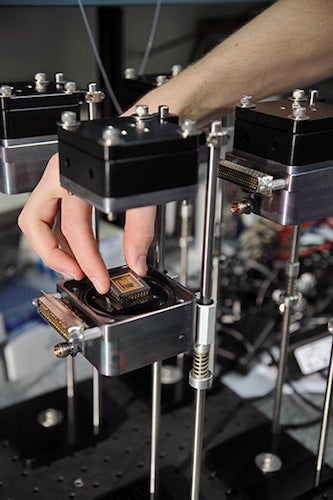
The US Naval Research Laboratory (NRL) scientists have developed a new small, lightweight sensor, know as Silicon Nanowires in a vertical array with a porous electrode (SiN-VAPOR), to enhance improvised explosive devices (IED) detection for military.
Free Buyers Guide
Leading Guide to Submarine and Submersible Suppliers for the Naval Industry
Thank you.
Go deeper with GlobalData
Your download email will arrive shortly.Please check your mail inbox to download buyer's guide
You may also be interested in:

The SiN-VAPOR sensor, which is in the early stages of development, has demonstrated its detection capability on the parts-per-billion, and even parts-per-trillion level of sensitivity, marking the first step in using trace chemical detection to solve the IED detection problem.
The SiN-VAPOR programme aims to have a small field-deployable, distributed sensor on the same form factor as the cell phone.
NRL researchers hope to distribute the low power, low overhead sensor, which could revolutionise the way trace chemical detection is conducted, to soldiers in the battlefield and to security personnel at airports across the globe.
The NRL scientist leading this research, Dr. Christopher Field, said: "We are very excited and confident about getting over that last hurdle to transition this technology to the soldier and also to the consumer."
Featuring 3D architecture, the portable sensor is made of silicon nanowires in a vertical orientation and could be able to perform chemical detection using a cell phone.
Currently, NRL researchers are maximising the surface area of the SiN-VAPOR architecture in order to enhance the sensing capabilities within the sensor.
Additionally, the SiN-VAPOR sensor could supplement bomb-sniffing dogs to help improve airport security.
Image: the NRL-developed SiN-VAPOR sensor. Photo: courtesy of the US Naval Research Laboratory.
Free Buyers Guide
Leading Guide to Submarine and Submersible Suppliers for the Naval Industry
Thank you.
Your download email will arrive shortly.Please check your mail inbox to download buyer's guide
You may also be interested in:

By downloading this Buyers Guide, you acknowledge that GlobalData UK Limited may share your information with our partners/sponsors who may contact you directly with information on their products and services.
Visit our Privacy Policy for more information about our services, how GlobalData may use, process and share your personal data, including information on your rights in respect of your personal data and how you can unsubscribe from future marketing communications. Our services are intended for corporate subscribers and you warrant that the email address submitted is your corporate email address.




